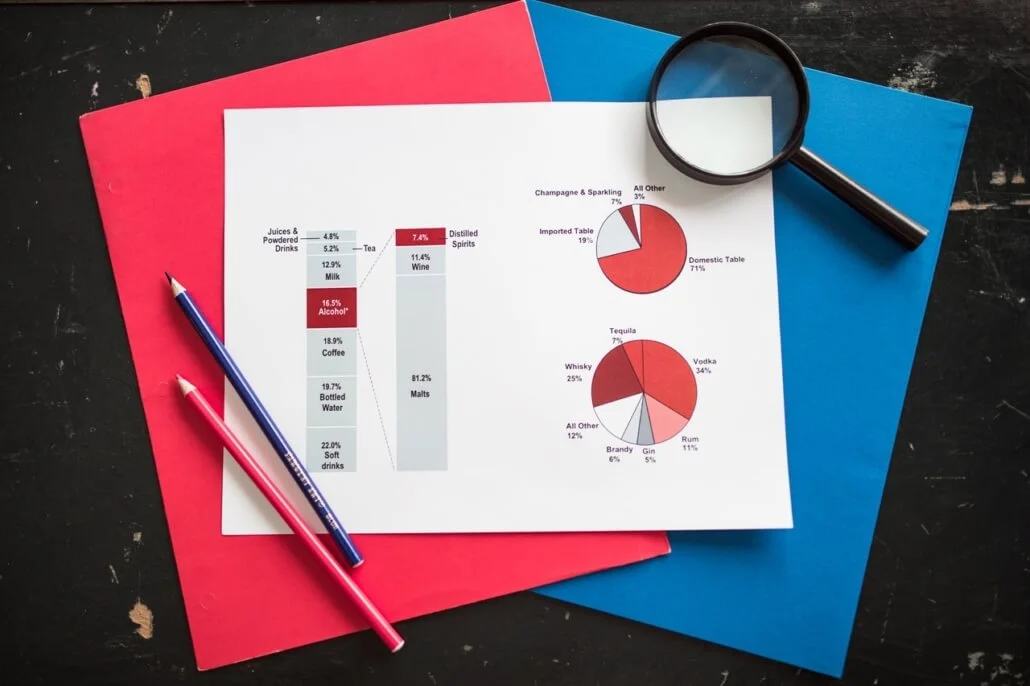Originally published May 26, 2020 , updated on September 5, 2024
They say a picture is worth a thousand words, and nowhere is that more true than in the world of marketing.
Many businesses create websites, hoping to attract more clients. But that is usually easier said than done. The internet is often referred to as the great equalizer. That’s because no matter how good your product and service, on the web, you are competing with every other content creator for your audience’s attention.

Over 211 million pieces of content being created every day and standing out from the digital noise is becoming ever more difficult.
Of these 211 million pieces of content are created daily. More than two million of those are blogs posts, and according to some sources, the average time people spend reading one of these articles is a mere 37 seconds. How much of a wordy blog post can people really absorb in 37 seconds?
This is where visual content such as infographics comes in. Human beings are visual creatures, and our brains process images 60 000 times faster than text. Therefore, any content on your website containing visuals is going to be easier for a skimming user to digest. One reason for this is that visual content succeeds in three core areas of value: appeal, comprehension and retention.
APPEAL
Visually presented information is more appealing to the eye than a wall of text. It can pique a user’s interest before any information is even processed. And because of this, blog posts and articles featuring some sort of visual content get 94% more traffic than those without. Posts with visuals also receive 37% more engagement on social media – an important metric for anyone engaged in content marketing.
Infographics specifically can increase web traffic by up to 12%. People share them three times more than any other type of content. The reasons is that, according to studies, 94% of people who share posts do so because they think it might be helpful to others.
COMPREHENSION
Human brain can process visuals much faster than the language associated with them. That’s because the human brain is hardwired to automatically interpret relationships between objects, allowing for almost instant comprehension with minimal effort.
According to studies, people follow visual instructions 323% better than written instructions.
RETENTION
Studies have shown that people can recall only recall about 10% of written content three days after it is read, which is abysmally low if you’re trying to make an impression. When it comes to visual content though, people are able to recall about 65% of the information three days later.
WHY INFOGRAPHICS TRUMP OTHER FORMS OF VISUAL CONTENT

Infographics are the media that has seen the largest increase in usage among B2B marketers, recently sitting at over 65%. Also, according to a study by Venngage, they are still the top performing type of visual content marketing. Another study by the Content Marketing Institute also shows that the effectiveness rating for infographics also rose more year-on-year than any other marketing tactic.
Though some people might be saying that infographics are dead, they couldn’t be more mistaken. Quite to the contrary, evidence would suggest that they are just as powerful a tool now as they were in the past – for a few reasons:
THEY ARE REPURPOSABLE ACROSS MULTIPLE PLATFORMS
A well-designed infographic can grab a viewer’s attention on any platform. Whether it is on your own blog or someone else’s, on social media sites such as Pinterest or Facebook, or even in print.
INFOGRAPHICS ARE SHAREABLE
As stated earlier, people are more likely to share information when they think it will be helpful to someone else. And at their core, infographics are inherently helpful. They break down possibly complex information into an easily digestible, visually-appealing format. This makes them ideal for sharing
THEY CAN STAND ON THEIR OWN WITHOUT THE HELP OF A BLOG POST
Though many infographics are accompanied by blog posts, they do not necessarily need any backup. By their very nature, they are self-explanatory and therefore, are accessible to more than just the people who visit your website.
YOU CAN EASILY SLICE AND DICE INFOGRAPHICS INTO MULTIPLE, SMALLER SOCIAL MEDIA POSTS

Anyone who denies the importance of social media for marketers in this day and age should probably be sectioned. So the fact that one infographic could create multiple social media opportunities cannot be seen as anything other than great. More social media posts means more opportunities for new traffic, and more opportunities for your audience to share.
Suffice it to say, infographics are not dead. They are a wellspring of opportunity for the savvy marketer, and should be at the forefront of any inbound marketing strategy.
Post Views: 1133


















